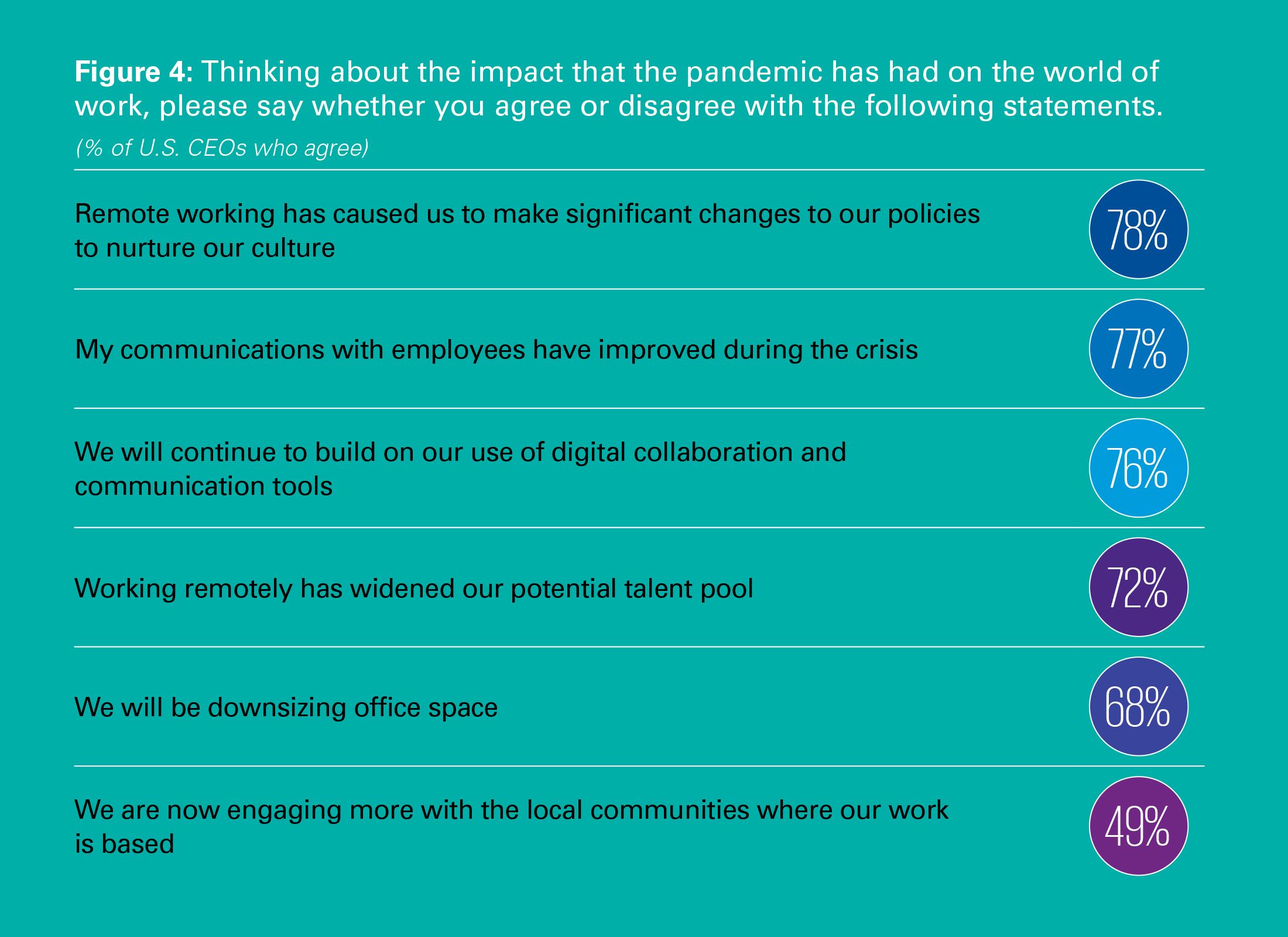The KPMG 2020 U.S. CEO Outlook offers a unique lens on chief executives’ evolving attitudes as the COVID-19 pandemic has unfolded. The report finds CEOs using this unparalleled moment in history to lead with increased purpose and impact, both societal and economic. They also are focused on finding opportunity in adversity.
COVID-19 has put an enormous stress on the workforce, with employees working remotely and thus blending their personal and professional spaces together while also dealing with economic and health anxieties and addressing childcare and other family needs.
“Under these difficult conditions, companies need to care for and nurture talent,” says Laura Newinski, Deputy Chair and Chief Operating Officer, KPMG U.S. “They can achieve that by maintaining a sharp focus on developing policies that support their people, like flexible work arrangements, and supplying technology solutions that allow people to connect with each other.” The CEO Outlook survey reveals that CEOs recognize the need to adjust policies to accommodate employees (Figure 4).
What will the workforce model of the future look like? “I think it will be somewhere in between the way we were pre-COVID and where we are today,” says Chevron’s Wirth. “Long term, people will miss the spontaneous innovation and creativity that comes with working together in person. But there will be a hybrid, more flexible model tailored to the individual type of work, the work group and the actual person.”
Two-thirds of Chevron’s employees currently work from home, while a third, the frontline workers on offshore oil rigs, ships and in the refineries, continue in the field. Wirth calls them “the unsung heroes of Chevron” who keep energy flowing into the economy to support vital goods and services.
For 84 Lumber, the pandemic has increased the need for employees. “84 Lumber is an essential business and rapidly expanding within new and existing markets. We are looking to increase our head count across the country. We are busy and we need people who are willing to roll up their sleeves, work hard and[K1] get the job done,” says Knox. “If you are willing to put in the effort, we will train you, support you and give you what you need to be successful.”

During the pandemic, talent risk has become a top concern when it comes to organizational growth. “It becomes an absolute imperative for the CEO to focus on the transformation of the workforce that is happening in organizations today,” explains Newinski. She says that human resources and business leaders are key to keeping in touch with the workforce and understanding employees’ issues and needs.
Newinski adds that the digital acceleration aimed at enabling the remote workforce is further exacerbating talent risk by causing even greater shortages of digital and change management professionals. She sees a big role for digital education and retraining to keep employees prepared for the new workforce model that lies ahead.
Aside from global health security/pandemic risk, which of the following risks poses the greatest threat to your organization’s growth over the next three years? (top 3)
There have been some brighter points for today’s new workforce models, with CEOs believing that their communications with their employees have improved (see Figure 4).
“Using digital tools, I firmly believe our communications have never been stronger at all levels of our company,” says Vertiv’s Johnson. “I would encourage other leaders to continue to find creative ways to connect online with their employees—from town halls to listening sessions to Q&As to informative videos. We used to think we had to do these things in person, but I believe we’ve adapted very well to meeting remotely. Our efforts have been very effective and, quite frankly, we’ve been able to connect more frequently using online tools.”
Newinski believes communications strategies like these will usher in a new era. “The pandemic-era communication with the CEO has created an environment of trust and goodwill,” she says. “We are facing very raw and important questions from the workforce, and employees are responding very well to hearing directly from leadership. There’s no turning back. Employees are going to expect to hear what’s happening at the top of the house. That’s a permanent pivot to how CEOs are going to be talking to their people.


